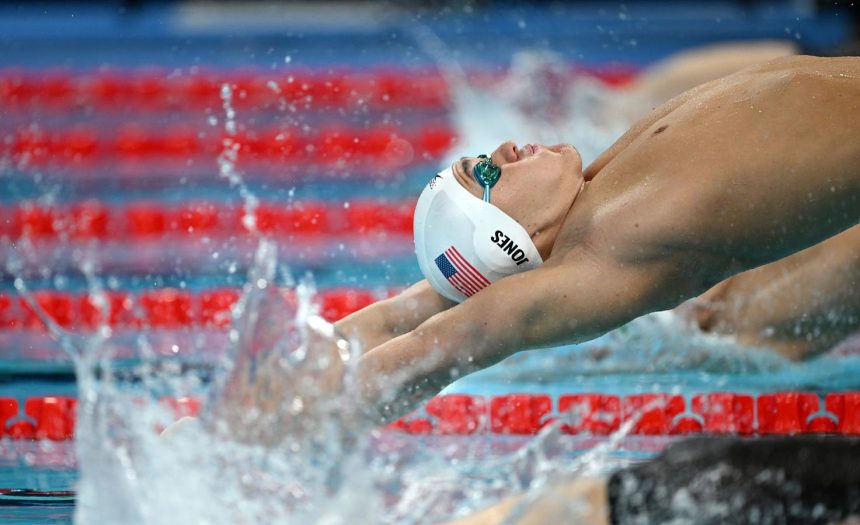Keaton Jones, a sophomore at the University of California, Berkeley, and a rising star in the world of swimming, has made a significant splash in the frigid waters of ice swimming. At the sixth Ice Swimming World Championships held in Molveno, Italy, Jones shattered five world records, cementing his status as a dominant force in this extreme sport. The championships, which require water temperatures of 41 degrees Fahrenheit or lower and prohibit the use of wetsuits or support devices, attracted hundreds of competitors from across the globe, highlighting the burgeoning popularity and increasing competitiveness of ice swimming. Jones’ remarkable achievements underscore not only his individual prowess but also the growing recognition and potential of this unique athletic discipline.
Jones’ journey into the icy realm began in 2023 when he became the first American to break an ice swimming world record. His performance in Molveno further solidified his position at the forefront of the sport. Braving the 35-degree Fahrenheit waters, he set new world records in the 50-meter pool for the 100 backstroke (59.01 seconds), 50 backstroke (27.21 seconds), 50 freestyle (24.67 seconds), 100 freestyle (53.71 seconds), and 100 butterfly (57.18 seconds). These accomplishments, recognized by both the International Ice Swimming Association (IISA) and Guinness World Records, demonstrate the remarkable feats of human endurance and athleticism possible within this challenging environment.
The demanding nature of ice swimming presents unique physiological and strategic challenges for athletes. The extreme cold significantly impacts performance, affecting everything from breathing patterns to race strategy. While Jones’ typical pool times are considerably faster – 54.31 seconds for the 100 backstroke, 25.70 seconds for the 50 backstroke, 23.49 seconds for the 50 freestyle, 49.59 seconds for the 100 freestyle, and 54.57 seconds for the 100 butterfly – the drastic temperature difference necessitates adjustments in approach and technique. Maintaining normal breathing rhythms in freestyle and butterfly, for example, becomes significantly more difficult in near-freezing water, forcing athletes like Jones to modify their strategies mid-race.
The IISA, founded in 2009 by South African ice swimmer Ram Barkai, has been instrumental in formalizing and popularizing the sport. Barkai, inspired to take up ice swimming after an injury at the age of 40, continues to push the boundaries of the sport, undertaking challenging swims in some of the world’s coldest waters, including Antarctica. His vision for the IISA has helped establish standardized rules, organize international competitions, and track world records, thereby fostering a more competitive and structured landscape for ice swimming. The growing participation and media attention surrounding the World Championships, the largest to date, indicate the sport’s increasing momentum and the potential for future inclusion in the Olympic Games.
Despite his record-breaking performance, Jones’ experience in Molveno wasn’t solely defined by victories. The demanding schedule, with limited rest between races, and the fact that he was competing mid-way through his college swimming season, meant he wasn’t at peak performance. He placed second in the 50 butterfly, highlighting the intensifying competition within the sport. This outcome, far from being a setback, underscores the evolving landscape of ice swimming and the emergence of new contenders vying for top spots. The close competition demonstrates the growing depth of talent and the exciting future that lies ahead for the sport.
Keaton Jones’ remarkable achievements in Molveno represent a significant step forward for ice swimming. His multiple world records, combined with the increasing global participation and the formalization of the sport under the IISA, point towards a bright future. While the prospect of Olympic inclusion remains a goal, the progress made in recent years, fueled by dedicated athletes like Jones and visionary figures like Barkai, suggests that this dream may one day become a reality. As Jones continues to push the boundaries of human performance in frigid waters, he not only elevates his own profile but also champions the growth and recognition of this extraordinary and challenging sport. His continued involvement, coupled with the expanding global interest, suggests that the future of ice swimming is indeed chillingly exciting.



